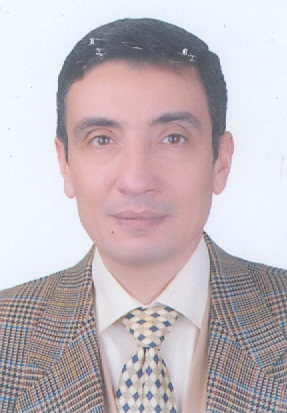
|
Parents’ perception of familial risk of COVID-19 infection and intention to vaccinate their children
|
|
|
Hamdy Khaled Sabra (1), Mostafa Abdulraheem Bakr(1), Omar El Sayed Mohmed Rageh (1), Asmaa Khaled (1), Omnia Mohamed Elbakliesh (1), Ibrahim Ali Kabbash (2)
|
|
|
Faculty of Medicine
|
|
|
ibrahim.kabbash@med.tanta.edu.eg
|
|
|
1454
|
|
|
Background: COVID-19 vaccines is crucial to stop spread of infection. Parent's perception of the COVID-19 vaccines is very important to protect themselves and their children and achieve maximum effect of vaccination programs.
Objective: We aim to evaluate perception and attitude of the parents towards the COVID-19 risk of infection and their intentions to vaccinate their children in Egypt.
Method: We conducted a Cross-Sectional study that included 10.32 participants who have children aged from 5 to 18 years old using a structured questionnaire during the period from December 2021 to February 2022.
Results: Overall, 65.0% of participants or their family members suffered from comorbidities that poses them at risk for COVID-19 infection such as hypertension (25.1%) and diabetes mellitus (16.1%). The prevalence of tobacco smoking in the studied families was 36.9%. Among participants, 40.6% had a family member with history of confirmed COVID-19 infection. Nearly one half of studied parents (48.2%) reported COVID-19 as a serious infection and the majority were worried about getting a family member infected (86.8%). Among participants 62.0% of male parents and 57.8% of female parents agreed that vaccine information is reliable. Participants reporting safety of COVID-19 vaccination represented 45.3%. If vaccine is available, 40.1% of parents intended to vaccinate their children. Gender and level of education did not affect perception of risk of infection and intention to vaccinate children. The main factors associated with the willing to vaccinate children were vaccine is not suitable for children under 18 years (OR=11.508), concern about vaccination safety (OR= 8.678), doubts about reliability of vaccine information (OR= 7.811) and ability of vaccine to prevent \infection (OR= 5.766).
Conclusion: Our study provides a brief insight about how parents think about COVID-19 vaccines and acceptance to vaccinate their children to help policymakers take decisions as regard to children vaccination with COVID-19 .
|
|

|
Perception and effectiveness of distant leaning among medical students during COVID-19 pandemic lockdown: Lessons learned
|
|
|
Ibrahim Ali Kabbash 1, Amira Ahmed Abdelkarem2, Nouran Mohammed ElKorashy3, Ibrahim Ali Elnems4, Ahmad Galal Elsayed4, Ibrahim Hossam Eldin Melik4, Sanaa Abd El-fatah Abdo5.
|
|
|
1- Professor at Public Health and Community Medicine Department, Faculty of Medicine, Tanta University, Egypt 2- Assistant Lecturer of Public Health and Community Medicine Department, Faculty of Medicine, Tanta University, Egypt 3- Instructor at Public Health and Community Medicine Department, Faculty of Medicine, Tanta University, Egypt 4- Students at Faculty of Medicine – Tanta University 5- Lecturer at Public Health and Community Medicine Department, Faculty of Medicine, Tanta University, Egypt.
|
|
|
sanaaabdo15@gmail.com
|
|
|
1457
|
|
|
Background: Distant leaning seems to be revolutionary in low-middle income countries especially with the massive impacts of COVID-19 pandemic.
Objective: We conducted this study was formulated to assess perception, and effectiveness of distant leaning among medical students in Egypt.
Methods: A cross-sectional study in Tanta and Kafrelsheikh Universities in Egypt. Data collected by an online questionnaire during November 2020 from 1504 medical students.
Results: YouTube ranked first among used platforms (68.1 %). Participants reported time and locations accessibility by 49.0% and 51.8%, respectively. Among participants, 46.0% disagreed that distant leaning environment enables interaction with colleagues and tutors, and 38.3% disagreed that they felt a sense of satisfaction and achievement. Students disagreed that contents were appropriate for delivery on the web reported by 40.6%. University was a significant factor in the domain of results where Kafrelshiekh University had a significantly higher mean than Tanta University. Males were significantly higher than females in the domain of response. Again, the domain of response showed higher mean in rural students than urban ones (59.06+14.84 and 56.86+15.31, respectively). Students of clinical years showed significantly higher means in all domains. Male gender, rural residence and preclinical academic years significantly affected response to distant learning. Students of preclinical academic years showed significantly lower levels of accessibility, interaction, response and results for distant learning.
Conclusion: There is a need for training of both tutors and students, better interaction and availability of suitable user-friendly materials to provide effective medical distant leaning.
Key words: COVID-19; Perception; E-learning; Medical Students; Egypt
|
|

|
Perception and Willingness to accept COVID‐19 Vaccination among University Students in Mid Delta Region of Egypt
|
|
|
Eman Ali Younis1, Abdel Aziz farouk El deep2, Safynaz El Saied Shalaby2
|
|
|
1 Lecturer of Public Health & Community Medicine, Public Health and Community Medicine Department, Faculty of Medicine, Tanta University, Egypt. 2 Professor of Public Health & Community Medicine, Public Health and Community Medicine Department, Faculty of Medicine, Tanta University, Egypt.
|
|
|
eman.yonis@med.tanta.edu.eg
|
|
|
1460
|
|
|
Background: Determining COVID-19 vaccine perception is a significant step that can be helpful in assessing the acceptance rate. Vaccine acceptance is the back bone for mass immunization to achieve the ultimate goal of herd immunity. Objectives: to assess the perception and willing to accept COVID-19 vaccination among university students in Mid Delta region of Egypt. Methods: A cross‐sectional study was carried out among Mid Delta region university students, Egypt. Data collection was done via an online questionnaire during May 2021 from 785 students.
Results: Level of knowledge was nearly the same among both medical and none medical students with no statistically significant difference in between the two groups. Despite of that the majority of the participant students were knowledgeable regarding the COVID‐19 vaccine and the social media was the commonest source of their knowledge. Attitude among intended group was significantly more positive than none intended group (P=.000). More than half of the students were hesitant and not intended to be vaccinated.
Conclusion: Attitude was significantly positive among intended group. More than half of the students were hesitant and not intended to be vaccinated.
KEYWORDS
COVID‐19, students, perception, vaccine, attitudes, willingness, motives, barriers
|
|

|
Effect of COVID-19 on the mental health of the community in mid Delta region, Egypt
|
|
|
Sanaa Abd El-fatah Abdo 1 Sara Mohamed Ahmed El-Gamal 2
|
|
|
1 Public Health and Community Medicine Department, Faculty of Medicine, Tanta University, Tanta, Egypt 2 Community Health Nursing, Faculty of Nursing, Tanta University, Tanta, Egypt
|
|
|
sanaaabdo15@gmail.com
|
|
|
1461
|
|
|
Background: COVID-19 pandemic has the potential to significantly affect mental health of community because of its physical, social, psychological, and economic burden. Aim: this study aimed to assess the effect of COVID-19 pandemic on community mental health. Methods: a cross-sectional study was conducted in mid Delta region in Egypt including 506 social media users using a questionnaire about personal characteristics, history of living with risky groups, having chronic disease, and infection with COVID. Mental health was assessed using Depression, Anxiety and Stress Scale (DASS-21). Results: high prevalence of depression (75.5%), anxiety (58.9%), and stress (48.5%). Males and low income were significant predictors of depression. Lower education was a predictor of anxiety and being a healthcare provider was a predictor of stress Conclusion: depression, anxiety and stress were highly prevalent and mental health preventive measures are essential to cope with other impacts of COVID-19.
Key words: COVID-19, Depression Anxiety Stress Scales (DASS), Community mental health.
|
|
.jpg)
|
The changing pattern of self-reported compliance with COVID-19 preventive measures since the beginning of the pandemic
|
|
|
Moeness Moustafa Alshishtawy1, Shimaa M. Saied1, *
|
|
|
1 Public Health & Community Medicine Department, Faculty of Medicine, Tanta University, Tanta, Egypt
|
|
|
dr.shimaasaied@gmail.com
|
|
|
1462
|
|
|
Background
Compliance with preventive measures for coronavirus disease 2019 (COVID-19) was among
ways to confront the transmission of the virus. However, non-adherence to implement the recommended
preventive measures have been reported to be a general problem everywhere. Communities worldwide were advised to stay in their homes as much as possible, avoid gatherings, frequently wash their hands, wear face masks, and maintain "social distance." The severity of these preventative measures significantly compromised day-to-day life. This study aimed to assess the change in the pattern of self-reported compliance with COVID-19 preventive measures since the beginning of the pandemic and now and to highlight the impact of these measures on personal and social lives.
A cross-sectional community-based study was conducted in Gharbia Governorate, Egypt, from February to May 2022.
using a self-administered questionnaire including the following parts: personal information, the pattern of preventive measures at the beginning of the corona pandemic, and current positive and negative effects of social distancing - effects of measures on people's lives. It included 2260 participants.
Results: Females represented 64.9% of participants, and 55.1% were rural residents. The majority of them (84.7%) received COVID-19 vaccination. Most of the participants (89.2%) used to wear face masks at the beginning of the pandemic, compared to 53.1% currently. A high percentage (85.8%) reported previous frequent hand washing and disinfection compared to 37.8% now. The majority (81.4%) were now compliant with social distancing compared to 61.2%. More than half (54.4%) of the participants reported negative impacts of social distancing on their social lives. Most participants (81.3%) perceived that the pandemic made their lives difficult and uncomfortable. Conclusion: The majority of the studied population is currently less compliant with COVID-19 preventive measures than at the beginning of the pandemic, making their lives more difficult.
|
|

|
Post-covid syndrome; symptoms, risk factors and management
|
|
|
Mohammed Salah Kasem
|
|
|
faculty of Medicine
|
|
|
mohammed.s.kasem@gmail.com
|
|
|
1477
|
|
|
Post-covid syndrome or long-covid syndrome is the persistence of physical or psychological symptoms for weeks after the covid-19 infection. Millions of people around the world suffer this syndrome that affects profoundly their recovery. People who have been hospitalized or who needed intensive care during recovery are at a greater risk of experiencing the syndrome. However, it is observed in people who didn’t have symptoms or had only mild to moderate symptoms during initial infection.
Aim: to review the current literature and updated evidence regarding the characteristics, the underlying causes and risk factors and the proper management of post-covid syndrome.
Summary: The most common symptoms are palpitation, chest pain, shortness of breath, headache, dry cough, Pins-and-needles feelings, abnormal smell or taste, fatigue, general discomfort, memory problems, sleep disturbances. anxiety and depression and difficulty thinking or concentrating. A significant proportion of individuals suffering post-covid syndrome experience persistent fatigue and/or cognitive impairment following resolution of acute COVID-19.
The World Health Organization estimates that at least 10% to 20% of people had 1 or more symptoms 12 weeks or longer after their initial diagnosis. These symptoms may be new or have persisted since their initial COVID-19 infection. It may affect adults or children. Till now, the sure mechanism of this syndrome is still lacking, although some evidence is emerging suggesting that subtle chronic inflammation of body organs like the heart and muscles may be implicated in this syndrome. On the other hands, recent evidence suggests auto-immune dysregulation as the main etiological mechanism of the syndrome, through latent poly-autoimmunity especially in hospitalized patients and females.
|
|

|
ACE2 and TMPRSS2 SNPs as Determinants of Susceptibility to, and Severity of, a COVID-19 Infection
|
|
|
Zeinab Kasemy, Shaimaa Abdelsattar
|
|
|
Departments of public health and community medicine and clinical biochemistry
|
|
|
zeinabkasemy@gmail.com
|
|
|
1482
|
|
|
Background: Genetic risk factors may be related to the infectivity and severity of SARS-CoV-2 infection. Angiotensin-converting enzyme 2 (ACE2) and host transmembrane serine protease (TMPRSS2) have key role in viral cell entrance and priming.
Methods: This case-control study on 147 healthy controls and 299 COVID-19 patients identified potential determinants and risk factors, including gene polymorphism involved in the severity (mild, moderate, severe) of COVID-19 disease defined by CORAD radiological criteria.
Results: The ACE2 s2285666 and TMPRSS2 rs12329760 SNPs were significantly linked with COVID-19 disease severity, as were certain co-morbidities (hypertension, heart disease) and laboratory parameters. Both SNPs were amongst the highest predictors of disease severity: TMPRSS2 rs12329760 CT + TT [odds ratio (95% CI) 17.6 (5.1–61.10), ACE2 rs2285666 CT + TT 9.9 (3.2–30.9), both p < 0.001]. There was an increase in the expression of genotype frequencies of ACE2 rs2285666 and TMPRSS2 rs1232976 (TT), (CT + TT), and (T) allele in severe COVID-19 group compared to control and mild groups. Disease severity was also linked to elevated CRP, ferritin and D-dimer, and lower lymphocytes and platelet count (all p < 0.001).
Conclusion: ACE2 rs2285666 and TMPRSS2 rs12329760 SNPs, in addition to lymphocyte count, CRP, D-dimers, ferritin, and hypertension, are predictors of COVID-19 disease severity.
|
|

|
Technostress Creators and Outcomes Among Egyptian Medical Staff and Students: A Multicenter Cross-Sectional Study of Remote Working Environment During COVID-19 Pandemic
|
|
|
Zeinab A. Kasemy, , * Asmaa F. Sharif, Ayah M. Barakat, Shaimaa R. Abdelmohsen, Nancy H. Hassan, Nagwa N. Hegazy, Asmaa Y. Sharfeldin, 1 Angham S. El-Ma'doul, Kholoud Adel Alsawy, Hanaa M. Abo Shereda, Sally Abdelwanees
|
|
|
Department of public health and community medicine
|
|
|
zeinabkasemy@gmail.com
|
|
|
1487
|
|
|
Objectives: This study aimed to investigate the technostress creators and outcomes among University medical and nursing faculties and students as direct effects of the remote working environment during the COVID-19 pandemic.
Methods: A multicenter cross-sectional study was conducted in medicine and nursing colleges of 5 Egyptian universities and included both staff members and students. The data were collected through personal interviews, from January to May 2021. All the participants took a four-part questionnaire that asked about personal and demographic data, technostress creators, job or study, and technical characteristics and technostress outcomes (burnout, strain, and work engagement). Furthermore, participants' blood cortisol and co-enzyme Q10 (CoQ10) levels were tested in a random sample of the students and medical staff.
Results: A total of 3,582 respondents participated in the study, 1,056 staff members and 2,526 students where 33.3% of the staff members and 7.6% of students reported high technostress. Among staff members, total technostress score significantly predicted Cortisol level (β = 2.98, CI 95%: 0.13-5.83), CoQ10(β = −6.54, CI 95%: [(−8.52)–(−4.56), strain (β = 1.20, CI 95%: 0.93–1.47), burnout (β = 0.73, CI 95%: 0.48–0.97) and engagement (β = −0.44, CI 95%: [(−0.77)–(−0.11)]) whereas among students, total technostress score significantly predicted cortisol level (β = 6.64, CI 95%: 2.78–10.49), strain (β = 1.25, CI 95%: 0.72–1.77), and burnout (β = 0.70, CI 95%: 0.37–1.04). Among staff members and students, technology characteristics were significantly positive predictors to technostress while job characteristics were significantly negative predictors to technostress.
Conclusion: The Egyptian medical staff members and students reported moderate-to-high technostress which was associated with high burnout, strain, and cortisol level; moreover, high technostress was associated with low-work engagement and low CoQ10 enzyme. This study highlighted the need to establish psychological support programs for staff members and students during the COVID-19 pandemic
|
|

|
The effect of Emotional Intelligence on Job Burnout among critical care specialists and Mediating Role of Workplace conflict management: A Cross-Sectional Study during COVID-19 pandemic
|
|
|
Zeinab Kasemy, Asmaa Fady, Shaimaa Abdelsattar, Nadia Bahgat, Asmaa Abdullatif
|
|
|
Faculty of medicine, Menoufia and Tanta Universities
|
|
|
zeinabkasemy@gmail.com
|
|
|
1489
|
|
|
Background: Despite being an essential protective factor against psychosocial risks and a measurable positive psychological resource, emotional intelligence still receives less attention in the process of reducing job burnout among healthcare workers which is considered a basic healthcare policy goal in the entire world specially during pandemics.
Objectives: This study aimed to association between job burnout and emotional intelligence, to examine the mediating effect workplace-based conflict management among healthcare workers among anesthesiologists and critical care specialists; furthermore, providing a new perspective for health organizations and hospital administrators to relieve the level of job burnout and workplace conflicts among this special healthcare worker category.
Methods: A cross-sectional study was used to collect data from two large Egyptian tertiary-care public hospitals in 2020. A total of 145 participants shared in this study. A descriptive analysis, univariate analysis, Pearson correlation analysis, and mediated regression analysis were used to assess the association between job burnout and the effect of emotional intelligence, and the mediating role of workplace conflict management.
Results: The mean job burnout score of anesthesiologists and critical care specialists was 29.39±7.07, with 68.8% suffering burnout. The emotional intelligence was significantly predicting job burnout (Emotional exhaustion: [β=-0.88, CI95%:(-1.41) -(0.35)], Depersonalization: [β=-0.43, CI95%:(-0.74) -(-0.12)], Reduced personal achievement: [β=-0.83, CI95%:(-1.32) -(0.34)]) and workplace conflict management [β=2.28, CI95%:(1.83) -(2.73)]. Further, workplace conflict management has a mediating effect on emotional intelligence and the three dimensions of job burnout (emotional exhaustion and depersonalization). CoQ10 seemed to have an association with emotional intelligence and conflict management [β=-0.43, CI95%:(-0.75) -(-0.11)] and [β=-0.23, CI95%:(-0.31) -(-0.14)] respectively.
Conclusions: This study combine emotional intelligence level, experiences of workplace conflict management, and job burnout levels of critical care specialists and anesthesiologists. Improving the emotional intelligence has significantly reduces the level of job burnout directly and through management of conflict indirectly.
|
|

|
Prevalence and Risk factors of Irritable Bowel syndrome among Egyptian School Teachers: A cross-sectional study during COVID-19 pandemic
|
|
|
Asmaa A. Abdel Latif1, Moustafa B. Ata2, Zeinab A. Kasemy3
|
|
|
Department of public health and community medicine
|
|
|
zeinabkasemy@gmail.com
|
|
|
1490
|
|
|
Background: irritable bowel syndrome is a chronic functional gastrointestinal (GI) disorder that may affect patients' abilities, productivity and the educational outcomes at various levels.
Objectives: To determine the prevalence of IBS among teachers and to find out the determinants associated with this disorder.
Methods: A cross-sectional study was conducted from October 2020 to February 2021 among a 424 Egyptian teachers. All participants were subjected to a pre-designed confidential self-administered questionnaire. An interview questionnaire was used for diagnosis of IBS according to Rome III diagnostic criteria. Regarding the psychiatric state of the studied participants, the Arabic version of Taylor Manifest Anxiety Scale (TMA) and Beck Depression Inventory (BDI) scale were used.
Results: Four hundred twenty-four participants, distributed as teachers (No=252) and controls (No=175) working at basic and secondary schools, participated in this study where 19.4% of the teachers vs. 7.4% of controls had IBS. IBS was significantly less prevalent among teachers practicing regular exercise. Based on (TMA) and (BDI) scales, there was a statistical significant association between IBS and anxiety (p < 0.05), but not depression.
Conclusion: IBS is prevalent among teachers. Female gender, those suffering from psychiatric disorders, and positive family history of IBS were the main risk factors for IBS. Screening of all teachers in the governorate for IBS and analysis of the work environment to stand on all factors of this disorder are suggested. Providing psychological and emotional support along with stress management is highly recommended.
|
|

|
Side effects of different COVID-19 vaccines and rate of post vaccination infection among healthcare providers at Tanta University Hospitals, Egypt
|
|
|
Nadira Mansour Hassan1, Zinab Mohamed El- ghamry2, Aya Samir Elkenany1, Sanaa Abdelfatah Mostafa abdo1
|
|
|
Public health and Community Medicine department, Faculty of Medicine, Tanta University 2 Occupational medicine Unit, Public health and Community Medicine department Faculty of Medicine, Tanta University
|
|
|
nadera.hassan@med.tanta.edu.eg
|
|
|
1494
|
|
|
Background: During epidemics health care providers constituting the front line defense. They are both high risk and dangerous group in disease transmission and spread. Their safety and health is a crucial issue to preserve this vital resource for the health system in that critical time. Aim of the study: to identify the side effects of different vaccines and rate of post vaccination infection with COVID-19 among physicians and nurses at Tanta University hospitals. Subjects and Method: the study was cross sectional and was carried out among healthcare providers at Tanta University hospitals. Data was collected by using a predesigned questionnaire sheet including sociodemographic, history of vaccination and general and local side effects, history of COVID-19 infection before and after vaccination. Results: the study included 1353 healthcare workers including physicians (50.8%), nurses (39.8%) and nursing supervisors (9.4%). Their mean age was 32.92± 8.45years, females were constituted 52.2% of participants, 52.4% from urban residence and 58% were married. Of the participants 96.8% were vaccinated against COVID-19 and 69.3% reported side effects after 1st dose and 55.1% after 2nd dose. The most common general side effects after 1st dose 2nd doses were headache, fatigue, fever, and myalgia with lower percentages at the second dose. On the other hand, the most common local side effects were pain, redness, hotness and itching. Local enlarged lymph nodes reported by 12.2% of participants after 1st dose and 10.1% after 2nd dose. Before vaccination 47.1% confirmed infection with COVID-19 and 10.9% were not sure. After vaccination, 20.7% confirmed COVID-19 infection and 11.1.9% had the manifestations but not confirmed by investigations. Conclusion and recommendation: the studied health care providers are endanger of being exposed to infection and reinfection with COVID-19 after vaccination. More studies are needed to evaluate the effectiveness of vaccination and other preventive precautions
|
|

|
Corona Virus (COVID -19) Infection: Perception based Practices and Obstacles of Prevention among Mothers in a Rural Area, Tanta, Egypt
|
|
|
Asmaa Mohamed kandeel, Eman Ali Younis1, Gamalat Ali Elsleet2, Ibrahim Ali Kabbash2
|
|
|
1 Lecturer of Public Health & Community Medicine, Public Health and Community Medicine Department, Faculty of Medicine, Tanta University, Egypt. 2 Professor of Public Health & Community Medicine, Public Health and Community Medicine Department, Faculty of Medicine, Tanta University, Egypt.
|
|
|
eman.yonis@med.tanta.edu.eg
|
|
|
1566
|
|
|
Background: Mother is the main care giver of the family and she has a vital role in facing the spread of COVID-19 and reducing its negative effect on the family. Her adequate perception will affect her practice and help family to face it effectively.
Methods: A cross‐sectional study was carried out among 400 females attending Kafr Essam primary health care center, Tanta, Egypt. Data was collected through using predesigned self-administered and interviewing questionnaire sheet during the period from February to July2021.
Results: The majority of the participants (84.3%) had good knowledge and nearly all the participants (99%) had positive attitude towards COVID-19 infection. Also the majority of the participants (89.8%) had good practice .The participants reported some barriers: 52.8% reported that their families don’t pay attention to that prevention measures, 48% reported that their work affected negatively on the ability to help their families against COVID-19, 41% reported her family doesn't have enough money to apply that precautionary measures, 40.3% said there is no enough place for isolation of infected people at home and The least percentage reported that health authorities hadn't provide them with enough free masks (15.5%).Outcomes: 91.5% increased stress on old people duo to infection prevention restrictions , 88.5% increased stress on parents, 81.3% their children spent more times on internet , 71.5% their children suffered from depression due to temporary schools closure , 58.3% failed in providing sufficient children care, 58.8% suffered husband violence, 55.3% increased violence and bad behavior against their children , 57% had problems with the husband , 67% discovered hidden characteristics in their family members ,63.3% had enhanced family relationship and 48.8% enhanced relationship with husband.
Conclusion:
Although the females' practices were good they reported some barriers affecting their practice. They experienced bad and good outcomes of COVID 19 pandemic.
|
|

|
Vaccine Hesitancy: Beliefs and Barriers Associated with COVID-19 Vaccination among Egyptian Medical Students
|
|
|
Mohammad s Abouzeid; Shimaa M. Saied; Eman M. Saied; Ibrahim Ali Kabbash; Sanaa Abd El‐Fatah Abdo
|
|
|
Tanta and Kafrelsheikh faculties of Medicine
|
|
|
mohamed.abouzaid@med.tanta.edu.eg
|
|
|
1485
|
|
|
Background: Vaccine hesitancy poses serious challenges for achieving coverage for population immunity. It is necessary to achieve high COVID-19 vaccination acceptance rates among medical students’ coverage being future health care providers. The current study aimed to explore the level of COVID-19 vaccine hesitancy and determine factors and barriers that may affect vaccination decision-making. Methods: A cross-sectional study was carried out among medical students in Tanta and Kafrelsheikh Universities, Egypt. Data collection was done via an online questionnaire during January 2021 from 2133 students. Results: Most of the participant students (90.5%) perceived the importance of the COVID-19 vaccine, 46% had vaccination hesitancy. An equal percentage of (6%) either definitely accepted or refused the vaccine. Most of the students had concerns regarding the vaccine’s adverse effects (96.8%) and ineffectiveness (93.2%). The most confirmed barriers of COVID-19 vaccination were deficient data regarding the vaccine’s adverse effects (potential 74.17% and unknown 56.31%) and insufficient information regarding the vaccine itself (72.76%). Conclusion: The government, health authority decision makers, medical experts and universities in Egypt need to work together and make efforts to reduce hesitancy and raise awareness about vaccinations, consequently improving the acceptance of COVID-19 vaccines.
|
|

|
Social Stigma Among Health Care Workers Regarding Covid-19 Pandemic and Its Impact on Their Mental Health
|
|
|
Mohammad S Abouzeid; Yomna A Elfert; Aya F Al Sebaey; Nadira M Hassan
|
|
|
Tanta Faculty of Medicine
|
|
|
mohamed.abouzaid@med.tanta.edu.eg
|
|
|
1486
|
|
|
Background: Social stigma is a complex construct that includes public, self, and structural components.
In the era of COVID_19 pandemic, health care professionals faced stigma due to missing knowledge and anxiety associated with the pandemic.
Methods: The study was a cross-sectional study conducted during the second wave of Covid-10 pandemic. It included (520) participants from health care workers at Tanta University Hospitals, Egypt. A pre-designed validated email questionnaire used to collect the required data. The questionnaire included five parts; I: sociodemographic data. II: identification of social stigma. III: identification of depressive disorders. IV: identification of anxiety disorders and Part V was concerned with assessment of insomnia in the last two weeks before participation in the study. Results: The study included (520) participants, 31.7% males and 68.3% females. 62.4% were physicians, 9% dentists, 8.7% pharmacists, 5.7% nurses and 14.1% others. Out of participants, 28.3% work in Isolation hospitals, 47% in Triage, 10.9% in both isolation and triage in addition to 13.7% from other hospitals. 82.2% reported that they faced some sorts of social stigma. Regarding depression, 7.2% had manifestations of severe depression, 48.1% of moderate depression, 32.4% having mild depression and 12.2% showed no manifestations. regarding anxiety, 16.7% showed manifestations of severe anxiety, 34.8% moderate anxiety, 33.3% mild anxiety and 15.2% showed no manifestations. 34.6% were fully satisfied with their sleep pattern, 33.7% were moderately satisfied and 22.8% were dissatisfied. Conclusion: Health care providores needs to be supported against social stigma which could affect their Job performance and quality of life in similar future situations.
|
|

|
Knowledge and attitude of the public about improper waste disposal and their hazards, Gharbia governorate, Egypt
|
|
|
Dr. Nihal Salah Shihab * Dr. Salwa Abd elmageed Atlam **
|
|
|
*Professor of Public Health and Community Medicine, Faculty of Medicine Tanta University, Egypt **Assistant professor of Public Health and Community Medicine, Faculty of Medicine, Tanta University, Egypt.
|
|
|
nihalshihab@gmail.com
|
|
|
1458
|
|
|
Background
The waste generation ratio is augmenting globally. With the increasing population, urbanization and industrialization, the generation of waste is likely to swell by 70% per year from 2016 levels to 3.40 billion tons in 2050 (World Bank report, 2018). This work aimed to study the public knowledge and attitude towards the consequences of improper waste disposal in their environment.
Methods: This is a descriptive cross-section study, carried out at Tanta city, Gharbia governorate, Egypt, from May to August 2021. A convenient sample of (N = 920) adults above 18 years was taken from different regions in Tanta city. Data was collected via a predesigned self-administered questionnaire sheet which included Personal information: age, sex, residence, level of education, marital status and occupation, and questions about knowledge and attitude towards improper waste disposal.
Results: study subjects were 64% females and 75% High education. Three-quarters of the subjects knew the effects of poor waste management. The majority (88%) knew that some solid wastes can be recycled. The majority (84%) knew that improper liquid waste management can cause the spread of different infectious diseases. Half of the subjects agree that every person has the responsibility for the proper collection and disposal of waste, 45% strongly agree that Solid and liquid wastes should not be collected together and 43% strongly agree that Solid and liquid wastes can be recycled or reused.
Conclusion: Three-quarters of the subjects knew the hazards of improper waste disposal. At the same time, the majority agree that liquid and solid wastes can be recycled for reuse and shouldn’t be collected together. Everyone has responsibility for the proper collection and disposal of waste.
|
|

|
Respiratory Health Disorders among Workers in Asphalt Mixing Plants (Menoufia Governorate)
|
|
|
Abdel Rasoul GM, Abu Salem ME, Marwan H, Khodary HA, Badr N and Zaghloul AF
|
|
|
Department of Public Health and Community Medicine, Faculty of Medicine , Menoufia University, Egypt
|
|
|
gaafar237@yahoo.com
|
|
|
1589
|
|
|
Background: Asphalt mixing plants’ workers are exposed to different chemicals in the work place that may affect respiratory system. Aim of work: To study respiratory health disorders among workers in asphalt mixing plants and to assess the workplace environment. Subjects and methods: A cross sectional study was conducted during the period from the February 1st, 2020 to December 31th, 2021, on 100 asphalt mixing plants’ workers’ chosen from 2 asphalt mixing plants, Menoufia governorate. Similar numbers of subjects was chosen randomly from workers' relatives who were never exposed to similar hazards. All participants were interviewed using a predesigned questionnaire, physical examination and spirometric measurements. Environmental study of the workplace was done. Results: The mean concentration of respirable dust was (3.872 ± 0.307 mg/m3) which is higher than the permissible level (3 mg/m3). Also, the mean concentration of free crystalline silica in respirable dust level was (45.58 ± 2.531µg/m3) which is lower than the permissible level for free crystalline silica level (50 µg/m3 = 0.05 mg/m3). Workers exposed to free crystalline silica had a significantly higher prevalence of respiratory manifestations e.g. rhinitis, cough, expectoration, dyspnea, wheezes and asthma (60%, 62%, 35%, 67%, 31% and 24%; respectively), as well as lower mean values of spirometric measurements than the controls (P≤0.05). The decline in spirometric measurements was positively correlated with duration of work. Conclusion and recommendations: Working in asphalt mixing plants with exposure to free crystalline silica has been adversely affecting the respiratory system and causing a decrease in spirometric measurements. Regular use of good quality personal protective equipment, proper ventilation and periodic medical examination are highly recommended. In addition, regular monitoring of the work environment and keeping dust level below permissible levels are very important.
|
|

|
Epidemiological features, coping strategies for infection and the extent of reinfection with COVID-19 virus among nurses working in Tanta University hospitals.
|
|
|
Hend Reda Ali El-kest
|
|
|
Faculty of Nursing, Tanta University
|
|
|
manar.gamal21@yahoo.com
|
|
|
1606
|
|
|
Background: -Today, Coronavirus diseases 2019 impose an important occupational risk to health care workers. Until now, globally several thousand of health care workers especially nurses have been infected with severe acute respiratory syndrome coronavirus. The aim of the study: to identify the epidemiological features, coping strategies of infection and investigate the extent of reinfection with Covid 19 virus amongst nurses working in Tanta University hospitals Subjects and Method: -Study design: - In this study descriptive cross sectional research design was used. Study settings: - The study was carried out in Tanta University hospitals, El-Gharbeya Governorate. Tools of data collection: - Two tools were used for data collection: A structured questionnaire sheet, and coping strategies questionnaire. Results: there were statistically significant relations between all items of socio demographic criteria of the studied nurses and occurrence of COVID-19 reinfection where P<0.001 except their residence, marital status and department items. Conclusion and recommendation: -The present study revealed that, seminars/workshops with periodic refreshment in service training should be regularly organized in tertiary care hospitals and health care centers for nurses in order to equip them with adequate knowledge on how to care with Covid 19 patients. Nurses must be equipped with adequate needed personal protective equipment and materials used in managing Covid 19 cases.
|
|

|
Assessment of Hikikomori among Egyptian and Saudi adolescence in the aftermath of COVID-19 Pandemic: A comparative study
|
|
|
Maha El-Araby1 Essmat A Mansour2, Essmat M Gemeay3
|
|
|
Faculty of Nursing, Tanta University
|
|
|
esmat.gemiei@nursing.tanta.edu.eg
|
|
|
1622
|
|
|
Background
Hikikomori "a state that has become a problem, that involves cooping oneself up in one's own home and not participating in society for six months or longer, but that does not seem to have another psychological problem Given at least 1.2% of the population (around a million people) are affected; Increase of new technology-dependent habits during the COVID-19 pandemic that may persist in the aftermath of the pandemic, as online shopping, food delivery, online education courses,. Such life habits may be associated with hikikomori. Aim: to Assess Hikikomori among Egyptian and Saudi adolescence aftermath of COVID-19 Pandemic: A comparative study Study Design: A comparative design was followed. Setting: faculty of nursing Tanta university and King Saud university Subjects 777 students at age from 17 to 19 Tools: two tools was used tool 1 a Socio-demographic Structured Questionnaire ( tool 2) -25-item Hikikomori Questionnaire (HQ-25) Teo et al. (2018) data were collected through google form Results: The results of the current study revealed that saudi and egyption subjects are nearly the same at socialization and emotional support subscale while saudi subjects are more at isolation subscale
Conclusion: Hikikomori is more prevalent among Saudi adolescence in the aftermath of COVID-19 Pandemic than Egyptian and in female than male
Recommendation: families and health professionals should be aware of t the potential increased risk of hikikomori among adolescence after the COVID-19 pandemic. Exercising at home, maintaining a healthy diet, and limiting screen time are all lifestyle modification
|
|

|
Will Covid-19 variants Lead to the Failure of its Vaccines?
|
|
|
Eman ElGohary, Khloud Abo Anber
|
|
|
Tanta University
|
|
|
eman30975062@science.tanta.edu.eg
|
|
|
1679
|
|
|
Severe acute respiratory syndrome coronavirus-2 (SARS-CoV-2) is the causative agent of coronavirus disease 2019 (COVID-19), which has spread worldwide since it was first identified in Wuhan, China, at the end of 2019. With the global transmission of the virus, a large number of SARS-CoV-2 variants have also appeared, especially, emerging strains that have recently been discovered in the United Kingdom (variant 20I/501Y.V1, lineage B.1.1.7), South Africa (variant 20H/501Y.V2, lineage B.1.351), and Brazil (variant 20 J/501Y.V3, and lineage P.1). The common feature of these variants is that they share the N501Y mutation involving the SARS-CoV-2 spike (S) protein, which is precisely the target of most COVID-19 vaccines. Furthermore, mutations such as N501Y, E484K, and K417N in the S protein may affect viral fitness and transmissibility. However, current research on the impact of these variants on COVID-19 vaccines. Neutralizing antibodies and small-molecule drugs such as remdesivir, the most promising compound to treat this infection, have attracted considerable attention Herein, we briefly explain why most COVID-19 vaccines target the S protein, update the progress of research regarding S protein-related COVID-19 vaccines, review the latest studies concerning the effects of S protein variants on COVID-19 vaccines. then constructed a type of programmed nanovesicle (NV) derived from bispecific CAR-T cells that express two single-chain fragment variables (scFv), named CR3022 and B38, to target SARS-CoV-2. Nanovesicles that express both CR3022 and B38 (CR3022/B38 NVs) have a stronger ability to neutralize Spike-pseudovirus infectivity than nanovesicles that express either CR3022 or B38 alone. Notably, the co-expression of CR3022 and B38, which target different epitopes of spike protein, could reduce the incidence of viral resistance.
|
|
|